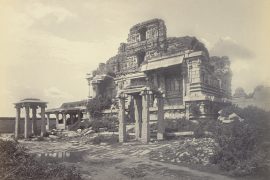It was over a thousand years ago that mankind first acknowledged their nearest galactic neighbour – the Andromeda Galaxy. At 2.5 million light years from earth, it is the closest galaxy to our own in the universe. And while the noted Greek astronomer Ptolemy noted it as a haze, it was Abd Al-Rahman Al-Sufi who first distinctly recorded in his Kitāb Ṣuwar al-Kawākib al-Thābitah or ‘Book of Fixed Stars’ in 964 A.D.
Al-Sufi called it ‘little cloud’ (alternatively translated as ‘a small cloudy patch’) and provided a representative image of it – a girl standing in front of a fish, representing Andromeda’s placement in front of the Arabian constellation of the Big Fish.
The work of astronomers like Al-Sufi presents an interesting historical parallel for this period. The great scientific tradition of European scientists like Ptolemy was in a period of decline; Europe was experiencing what was later called its ‘Dark Ages’. But it was in this period that the light of human knowledge shined brightest in the Middle East. The Arabs and Persians were in the midst of their golden age – and their work resulted in much of what we encompass in modern size – from our numerals to algebra and even computing.

-30-
Copyright©Madras Courier, All Rights Reserved. You may share using our article tools. Please don't cut articles from madrascourier.com and redistribute by email, post to the web, mobile phone or social media.Please send in your feed back and comments to [email protected]











